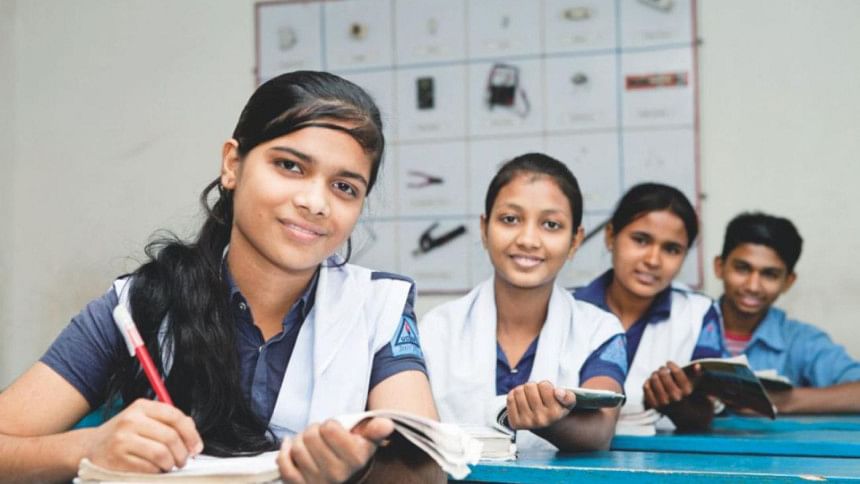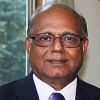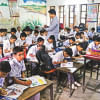Schooling is not learning

The release of the World Development Report (WDR) 2018 of the World Bank subtitled "Learning to Realize Education's Promise," on February 27 in Dhaka, spurred a flurry of media reports about how poorly the school system was performing.
A popular headline was about 4.5 years of the students' 11 years of schooling being wasted, because on average they learned no more than what sixth-graders should learn. One may quibble about how this precise numerical conclusion was reached, but perhaps few would dispute the message that most children were far behind where they should be in basic competencies such as reading, writing and working with numbers.
More helpful, but hardly comforting, was the explanation based on an assessment of learning through independent sampling of students under the National Student Assessment (NSA) Project.
The NSA of 2015 showed that 35 percent of class 3 students did not score at the expected level in Bangla reading, and 43 percent could not answer simple questions from reading a Bangla passage. In math, 59 percent scored below the grade level.
Disturbingly, when the grade 3 students reached grade 5 two years later in 2017, their performance was worse. The NSA 2017, not mentioned in the World Bank report, shows that 88 percent scored below the expected score for class 5 in Bangla and 83 percent in math. This is no news in Bangladesh (See "Our children are in school, but can they read?" by Shahidul Islam and John Richards, The Daily Star, September 14, 2017)
The Annual Status of Education Reports (ASER), based on national sample surveys, prepared in India and Pakistan by educational NGOs, provides a picture comparable to that of NSA in Bangladesh. Interestingly, these assessments seem to have failed to ring the alarm bell in these countries. One wonders if all of our countries suffer from the Attention Deficit Hyperactivity Disorder (ADHD) syndrome, a neuro-developmental condition noticed among some young children.
According to Wikipedia, ADHD is characterised by difficulty in paying attention, excessive activity, and difficulty in regulating emotions which are not appropriate for a person's age.
Without stretching the analogy too far, one cannot but notice a lack of serious recognition of, or sustained attention to, the problem of our schools' failure, sporadic actions taken reacting to symptoms of problems, and decisions often swayed by emotions and populist views. Reasoned judgement based on evidence and lessons of experience and making hard choices balancing priorities are the casualties of the ADHD syndrome in decision-making.
In this space, an exposition of ADHD in policy and decision-making is not in order. A few hints have to suffice. Students are not learning and teachers are not doing their job—so the solution chosen is four major, high-stake public examinations in a student's school life that become the sole focus of the students', teachers' and parents' time, effort and energy, detracting them from actual learning.
The same public exams have driven students to private coaching and tutoring and reliance on memorising guidebooks and note books. The populist solution—which is often attempted, albeit without success—is to ban coaching and guidebooks.
Communities have set up schools to meet expanding demands for education, but the schools are not often endowed with sufficient human and infrastructure resources. Instead of working with communities and local government bodies to mobilise resources preserving community involvement and accountability, the solution found was to "nationalise" the schools and declare the teachers central-government employees. No matter that the existing government schools are plagued by many problems of teacher performance and accountability.
School education remains under the jurisdiction of two separate ministries—a legacy of priority to compulsory primary education. Problems have arisen in planning and managing integrated and holistic development of curriculum, teacher preparation, quality assurance, and facilities for universal primary and secondary education—a sine qua non for an aspiring middle-income country.
WDR has identified four major strategic priorities to overcome the learning crisis for Bangladesh and South Asia. These are: a quality early childhood development programme to give all children a fair start in life and prepare them well for school; transforming teaching and learning into a genuinely active child-centred approach; stronger school governance and management; and adequate public investment to support these actions and necessary inputs for quality.
The priorities suggested are not particularly novel, but complex and multi-faceted, comprising many elements. In fact, it can be argued that these areas of action are being promoted by the education development programmes such as the fourth phase of the Primary Education Development Programme (PEDP4) and the Secondary Education Development Programme (SEDP).
The key challenge is how the multi-dimensional strategies can be effectively implemented, producing the desired results. In fact, the evidence that WDR compiled and its analysis point to the education work force, especially teachers, as the common factor and the spearhead of the change and transformation aimed for in the four priorities.
It is justifiably said that an education system is only as good as its teachers. This is little consolation when school teaching is the last occupational choice for a college graduate, as is the case in Bangladesh and likely in other South Asian countries. (CAMPE, Quality Education: Teachers for the Next Generation, 2015).
A peculiarity of South Asia including Bangladesh, unlike most other parts of the world, is that graduates with a general degree is appointed as a teacher and then sent for pedagogy training, generally of a year's duration. The result often is that graduates failing to find another occupation land in teaching—with low motivation and commitment to the profession.
The Indian Ministry of Human Resource Development announced in 2017 the plan to replace the conventional teacher preparation with an integrated programme combining a regular bachelor's degree in a general discipline and the postgraduate Bachelor of Education.
The four-year undergraduate course is meant for students straight out of school to train as teachers for all school classes from pre-primary to senior secondary. However, it appears that its implementation rapidly and widely awaits reconciliation of parochial concerns of both traditional teacher training institutions and general higher learning institutions.
The integrated undergraduate programme allows young people out of high school to be drawn into the teaching profession. It lets them go through a four-year induction to prepare themselves intellectually, emotionally and professionally to make a lifetime commitment.
This is the mainstream approach to teacher preparation in most parts of the world other than in South Asia. It may be the single most important initiative to transform schooling into learning in South Asia. The necessary steps for planning and implementation with a ten-year time frame deserve urgent consideration.
Dr Manzoor Ahmed is professor emeritus at BRAC University.










Comments